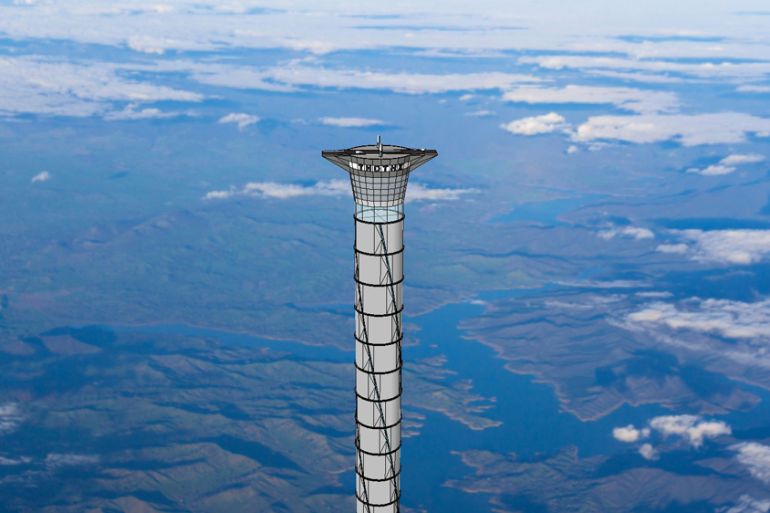Patented ‘space elevator’ may put astronauts into orbit
Canadian company given US patent for pneumatically pressurised 20km-high tower from which astronauts would be launched.

A Canadian space company, has been granted the US patent for a space elevator which would take astronauts 20km above Earth so they could then be propelled into orbit.
The freestanding space tower would be pneumatically pressurised and be 20 times the height of current tall structures.
Keep reading
list of 4 itemsCould shipping containers be the answer to Ghana’s housing crisis?
Are Chinese electric vehicles taking over the world?
First pig kidney in a human: Is this the future of transplants?
“Astronauts would ascend to 20km by electrical elevator. From the top of the tower, space planes will launch in a single stage to orbit, returning to the top of the tower for refueling and reflight,” said Dr Brendan Quine, the inventor.
Announced on Monday in the United States Patent and Trademark Office’s (USPTO) Official Gazette, the tower could also be used for wind-energy generation, communications and tourism.
The technology offers an exciting new way to access space using completely reusable hardware and saving more than 30 percent of the fuel of a conventional rocket.
Caroline Roberts, the president and chief executive of Thoth Technology, which has been awarded the patent, believes the space tower, coupled with self-landing rocket technologies being developed by others, will herald a new era of space transportation.
“Landing on a barge at sea level is a great demonstration, but landing at 12 miles (20km) above sea level will make space flight more like taking a passenger jet.”
The space elevator tower has a segmented elevator core structure, each segment being formed of at least one pneumatically pressurised cell.
The pressure cells may be filled with air or another gas. Elevator cars may ascend or descend on the outer surface of the elevator core structure or in a shaft on the interior of the elevator core structure.
A payload may be launched from a pod or deck at the upper end of the space elevator tower.
‘Fountains of Paradise’
It has previously been proposed, most famously by Arthur C Clarke in his 1978 novel, The Fountains of Paradise, that a space elevator could be constructed using a cable and counter-balanced mass system.
For Earth’s gravity and spin rate, such a solution requires a cable of at least 35,000km in length and a counter balance mass similar to a small asteroid.
Such a system could be constructed by launching the cable into space or manufacturing it in situ and lowering it into contact with Earth.
However, the technological obstacles that must be overcome, including the construction of a cable with suitable strength characteristics, or the in-space construction of the apparatus, have not been realised since the concept was popularised by Clarke.
Known materials are simply not strong enough to enable the construction of a cable of that length that would even be capable of supporting its own weight.